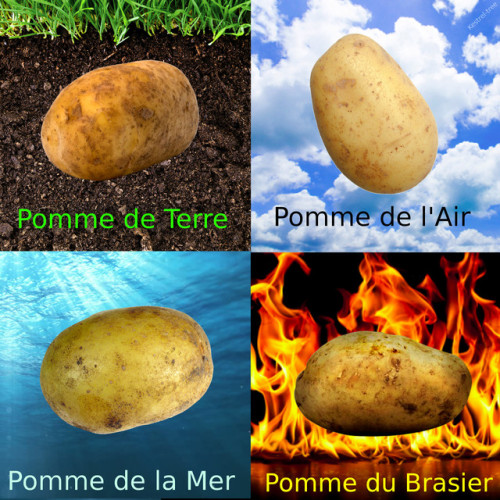Yeah Sex Is Great But Have You Ever Listened To A Song In Your Target Language And Suddenly Understood
Yeah sex is great but have you ever listened to a song in your target language and suddenly understood a new line for the first time
More Posts from Littlelanguagefox and Others
the 20s are soon upon us
things to include
flapper dresses
jazz music
sex positivity
women’s rights
renewal of arts & culture
increased immigration & cultural sharing
sequins
eyeliner
things to leave behind
racism & nativism
consumerist culture
white guys writing “the great american novel”
♡ SOME SPANISH TELENOVELA PHRASES ♡

requested by an anon
Exclamatory Phrases
¡no puede ser! | it can’t be!
¡vete / fuera de aquí! | go away, get out of here!
¡déjame en paz / aléjate! | leave me alone, get away from me
¡suéltame! | get off me, let go of me!
¡no me toques! | don’t touch me!
¡dime la verdad! | tell me the truth!
¡no lo creo! | i don’t believe it!
¡no me mientas! | don’t lie to me!
¡mentiras! | lies!
¡no lo soporto! | i can’t stand it!
!cállate! | shut up!
Insults
cobarde | coward
desagradecido/a | ungrateful person
mentiroso/a | liar
sinvergüenzo/a | shameless person
Plot Reveal Phrases
estoy embarazada | i’m pregnant
eres el padre | you’re the father
tengo un amante | i have a lover
quiero el divorcio | i want a divorce
habia un accidente | there was an accident
está muerto | she / he is dead
Love Phrases
estoy en enamorada de ti | i’m in love with you
eres el amor de mi vida | you’re the love of my life
eres mi vida | you’re my life
te amo / te quiero | i love you
te juro / te prometo | i swear to you, i promise you
no quiero vivir sin ti | i don’t want to live without you
no puedo vivir sin ti | i can’t live without you
cásate conmigo | marry me
¡nos vamos a casar¡ | we’re getting married!
Heartbreak Phrases
¡se acabo! | it’s over!
él me engañó / ella me engañó | she cheated on me
tiene otra mujer | he has another woman
no te amo / no te quiero | i don’t love you
me hiciste daño | you hurt me
¡te odio! | i hate you!
no lo / la puedo olvidar | i can’t forget about him / her
MISC. vocab
el novio, la novia | boyfriend, girlfriend
el amante | lover
el secreto | secret
el embarazo | pregnancy
la muerte | death
envidia | envy, jealousy
venganza | vengeance, revenge
more phrase lists ♡ idioms ♡ random phrases p. one ♡ random phrases p. two request a vocabulary / phrase list
don’t make other people’s decisions for them. apply for the job you don’t think you’ll get. let them decide if you have the skills they’re looking for. tell that person you like them even though you think they’re out of your league. let them decide if they like you. stop trying to predict and control everything. bring what you have to the table. let the rest go.
im trying to clean out my school binders and i dont know why but every time i go to throw away schoolwork i always hesitate. ‘what if i want to use this for studying later’ says i, the dumbass, who has not studied, for a single thing, in my entire goddamn life
when the times get rough and I lose sight of the goal i just. reread “the orange” by wendy cope again & remember. that’s where I’m going folks. sooner or later, whatever it takes.
En Anglais, on ne dit pas “quatre vingt dix neuf”, on dit “ninety nine” qu'on pourrait traduire comme “Hurr durr, regardez mois, j'ai un système de numérotation fonctionnel” et je crois que c'est magnifique.






How to Make a Language Notebook
I’ve been using a language notebook for about a month now, and I finally figured out a format that works for me, so I figured I’d share it with you guys! Keep in mind these are only recommendations, feel free to do your own thing if you think it’ll be more convenient for you!
Okay, so to start, here’s what you’ll need:
1) Pens
I recommend three pens of different colours. I used blue, orange and black. The blue is for words/ sentences in my target language. I chose a dark colour so they would stand out more. The orange, a light colour, is for words/ sentences in my native language (or English, in my case). It’s a lighter colour because it makes the blue stand out more, so I focus more on the words in my target language instead of the English ones. The black is for titles, drawings, and words in another language that isn’t my target or my native. For example, I compare German with Spanish in this entry:

As you can see, the German phrases are in blue because it’s my target language. The explanations in English are in orange, and the title and Spanish words are in black.
2) A notebook
Some people recommend separating grammar and vocabulary. This is an excellent idea if you have many notebooks or notebooks with different sections. If you don’t, it’s not a problem. I only use one notebook, which works for me, because I don’t use it too much (it’s mostly a space to write down stuff I like, not stuff I will necessarily use). If you plan on using your notebook in a more serious manner, but cannot afford to get several notebooks, I recommend you write everything concerning vocabulary (or grammar) in the front of the notebook, and the rest (grammar or vocabulary, it depends) at the back. Make sure to not use a very thin notebook though!
If you don’t feel the need to separate grammar and vocabulary, there are ways of dividing the topics:
3) Sticky Tabs
I have four different topics in my language notebook: vocabulary, grammar, verbs, and miscellaneous. To divide them, I add sticky tabs of different colours next to each entry. For example, vocabulary is pink, grammar is blue, verbs are orange, and miscellaneous is green.

This allows me to see what the topic is immediately, and it makes my notebook very colourful!
4) 4cm margin
It doesn’t exactly have to be 4 centimeters, but it shouldn’t be more than a third of the page. This margin (I place mine on the right of the page) is for any notes you might want to add about the entry. For example, definitions, formal/ informal forms, etc. It doesn’t necessarily have to be used for every entry, but it’s easier to trace it for all, instead of just adding it when you need it. It’s also a good place to put the sticky tabs (refer to the previous image). I trace the line with a pencil so that it’s lighter and more discreet than the rest of the writing, but that’s up to you.
5) Index/ Key
One last thing you’ll (maybe) need: an index/ key! I don’t personally have an index, because I have too many entries per page, but a key is definitely useful if you use the sticky tab method. I still haven’t gotten around to making one, but that’s because I’m lazy Just write it (or stick it) on the back of the cover so you don’t waste a page on it.
Next you’ll need to decide what to write in the notebook. If you already know what to write, great! If not, here are some suggestions:
- Class notes
- Grammar rules/ verb conjugations/ etc. that you struggle with
- Funny sayings or random slang you learn
- Tumblr posts (these are great because they are generally explained simply, but make sure to check the info, because there might be some small mistakes)
- Journal entries (these are a great way to practice what you’ve written in previous entries!)
It doesn’t all have to be useful, necessarily. I have jokes, and puns that I might never use, but that are funny anyways. I find it’s a great way to stay motivated!
If you want more photos from my notebook, you can find ‘em here :)
So yeah, that’s all! :D I hope you guys like it, and feel free to ask me questions about my language notebook!

Ne forget pas les quatres food groupes mes amis!
-
 chemicznyplaz reblogged this · 5 months ago
chemicznyplaz reblogged this · 5 months ago -
 chemicznyplaz liked this · 5 months ago
chemicznyplaz liked this · 5 months ago -
 nbsweets04 reblogged this · 1 year ago
nbsweets04 reblogged this · 1 year ago -
 nbsweets04 liked this · 1 year ago
nbsweets04 liked this · 1 year ago -
 littlebirdygirly liked this · 2 years ago
littlebirdygirly liked this · 2 years ago -
 misguidedgoldfish liked this · 2 years ago
misguidedgoldfish liked this · 2 years ago -
 marlasingercomplex-deactivated reblogged this · 2 years ago
marlasingercomplex-deactivated reblogged this · 2 years ago -
 arzomago liked this · 2 years ago
arzomago liked this · 2 years ago -
 ddaengksj reblogged this · 2 years ago
ddaengksj reblogged this · 2 years ago -
 ddaengksj liked this · 2 years ago
ddaengksj liked this · 2 years ago -
 allinllachuteruteru liked this · 2 years ago
allinllachuteruteru liked this · 2 years ago -
 storm-heart liked this · 2 years ago
storm-heart liked this · 2 years ago -
 theycallmeskittles reblogged this · 2 years ago
theycallmeskittles reblogged this · 2 years ago -
 wherela liked this · 2 years ago
wherela liked this · 2 years ago -
 tea-drinking-bitch liked this · 2 years ago
tea-drinking-bitch liked this · 2 years ago -
 bluecopihue liked this · 2 years ago
bluecopihue liked this · 2 years ago -
 sammyofthesea reblogged this · 2 years ago
sammyofthesea reblogged this · 2 years ago -
 sammyofthesea liked this · 2 years ago
sammyofthesea liked this · 2 years ago -
 b-plot-butch reblogged this · 2 years ago
b-plot-butch reblogged this · 2 years ago -
 tortadecuchufli reblogged this · 2 years ago
tortadecuchufli reblogged this · 2 years ago -
 tortadecuchufli liked this · 2 years ago
tortadecuchufli liked this · 2 years ago -
 deanwinchesterstits liked this · 2 years ago
deanwinchesterstits liked this · 2 years ago -
 b-plot-butch liked this · 2 years ago
b-plot-butch liked this · 2 years ago -
 inthewaytoamultilinguallife reblogged this · 2 years ago
inthewaytoamultilinguallife reblogged this · 2 years ago -
 whoisjohngalt25 liked this · 3 years ago
whoisjohngalt25 liked this · 3 years ago -
 nocticola liked this · 3 years ago
nocticola liked this · 3 years ago -
 noerttiprinsessa reblogged this · 3 years ago
noerttiprinsessa reblogged this · 3 years ago -
 notesbymari reblogged this · 3 years ago
notesbymari reblogged this · 3 years ago -
 starsguideyou reblogged this · 3 years ago
starsguideyou reblogged this · 3 years ago -
 poenavictoria reblogged this · 4 years ago
poenavictoria reblogged this · 4 years ago -
 poenavictoria liked this · 4 years ago
poenavictoria liked this · 4 years ago -
 chiiizakura liked this · 4 years ago
chiiizakura liked this · 4 years ago -
 mrscrocombe reblogged this · 4 years ago
mrscrocombe reblogged this · 4 years ago -
 paper-street-soap reblogged this · 4 years ago
paper-street-soap reblogged this · 4 years ago -
 athgalla reblogged this · 4 years ago
athgalla reblogged this · 4 years ago -
 zzzzbebop liked this · 4 years ago
zzzzbebop liked this · 4 years ago -
 strohller27 reblogged this · 4 years ago
strohller27 reblogged this · 4 years ago -
 strohller27 liked this · 4 years ago
strohller27 liked this · 4 years ago -
 iuilefae liked this · 5 years ago
iuilefae liked this · 5 years ago -
 zephill liked this · 5 years ago
zephill liked this · 5 years ago -
 disabledxlonelyfrog liked this · 5 years ago
disabledxlonelyfrog liked this · 5 years ago -
 r41nbowrumpusp4rty reblogged this · 5 years ago
r41nbowrumpusp4rty reblogged this · 5 years ago -
 chimup liked this · 5 years ago
chimup liked this · 5 years ago
